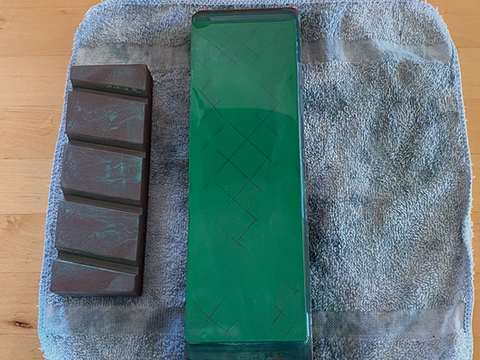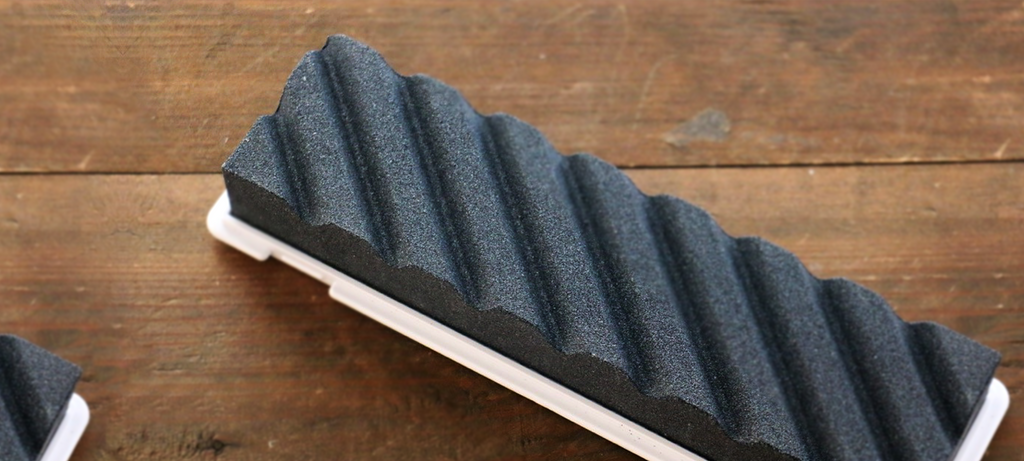How to Flatten A Whetstone Using Pencil Hash Marks
When it comes to sharpening, one crucial aspect is to use a flat stone. This allows you to maintain a consistent bevel angle throughout the entire process. Over time, the whetstone will naturally wear down and develop a concave surface, also known as 'dish'. This can make the sharpening process feel less productive, as it becomes harder to gauge progress and sharpen evenly. To overcome this challenge, we highly recommend incorporating a flattening stone into your sharpening routine. By using a flattening stone before or after each sharpening session, you ensure that you efficiently remove metal with every stroke, maximizing the effectiveness of your sharpening efforts.
What You’ll Need
- flattening stone
- pencil
- sturdy, non-slip surface
Note: It’s important to use the right kind of flattening stone or stone fixer depending on the whetstone you are flattening. Coarse stones should be paired with coarse flattening stones, fine stones with fine flattening stones, and so on. Too coarse of a flattening stone will leave the surface of a fine whetstone too rough, and a fine flattening stone will not remove material fast enough to effectively flatten a coarse whetstone.
Make Hash Marks
Hash marks can be used as an effective guide to ensure that you are achieving a completely flat surface on your stone. To begin, take a pencil and make marks on the surface you intend to flatten, moving in one direction. Then, repeat this process by making marks in the opposite direction. By doing so, you will create a diamond-like pattern that spans across the entire top surface of the whetstone. This pattern serves as a helpful visual reference to ensure that you are evenly flattening the stone and achieving the desired flatness.

Secure Whetstone
To ensure proper sharpening of your blades, it is important to follow these steps. Firstly, find a suitable surface to place your whetstone. It should be flat and free from any slippery materials. You can consider using a non-slip pad, a damp towel, or a stone stand to secure the whetstone in place.
Once you have secured the whetstone, position it with the face facing upwards. Next, take the flattening stone and place it on the uneven, top side of the whetstone. It is crucial to hold the flattening stone with a firm grip.

Use Flattening Stone
Now, you can begin the flattening process. Move the flattening stone back and forth over the surface of the whetstone. Make sure to apply an even and moderate amount of pressure. As you continue to use the flattening stone, you will observe the marks gradually disappearing. This indicates that you are targeting the high points on the stone and achieving a smoother surface.

Remove All Hash Marks
Continue to flatten your stone evenly using gentle and consistent pressure. Make sure to cover the entire surface of the stone, gradually erasing all of the hash marks left by the pencil. Take your time with this step, as it is important to achieve a completely flat and smooth surface. Once you have removed all of the pencil marks, carefully rinse the stones to remove any residue. This thorough flattening process will ensure that you have a perfectly flat and workable surface for your stone.

Remember, by following these steps diligently and consistently, you can not only ensure optimal performance and longevity of your blades and stones, but also greatly enhance your overall sharpening experience. Taking the time and effort to properly care for your sharpening tools will not only result in sharper blades and more effective sharpening, but it will also save you time and money in the long run.
Thank you for taking the time to read this guide. We hope that you have found it helpful and informative. If you have any questions about stone flattening or if you would like to share your own tips and techniques, we encourage you to leave a comment below. Your feedback and contributions are greatly appreciated and will benefit the entire sharpening community.


Comments (0)